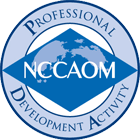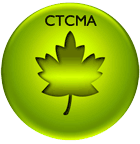High Cholesterol #2
Course Excerpt

About the author
Dr. Greg Livingston is an advisor and contributing author for the Healthcare Medicine Institute. Dr. Livingston received his Ph.D. in Chinese Internal Medicine and the Clinical Application of Shang Han Lun at Zhejiang University of Chinese Medicine, China. He is one of the few westerners to have completed his Ph.D. in Chinese Medicine in China entirely in the Chinese language. Dr. Livingston has served as a Chinese Medicine Physician at the North American International Hospital, Hangzhou, China. He is a lecturer at Zhejiang University Medical School and is currently a Chinese Medicine Physician at the Shanghai East International Medical Center, Shanghai Pudong.
SAMPLE OF COURSE MATERIAL
3. Prevention and Treatment of Dyslipidemia in Chinese Medicine
3.1 Lifestyle
3.1.1 Sleep Hygiene
Chinese medicine holds that regular sleeping habits are crucial to good health. Modern research shows that sleep habits have an effect on serum lipid levels and Body Mass Index (BMI). However, the majority of modern studies only look at total amount of sleep, ignoring other aspects of sleep hygiene such as bedtime, and regularity of bed/wake times. Chinese medicine contends that sufficient sleep time and regularity of bedtime and wake-time are all important. In general, 8 hours of sleep is considered an appropriate amount for most individuals. For sick and/or weak patients more sleep may be necessary. Bedtime ideally should be around 9pm, and preferably no later than 10pm, and it is important to go to bed at roughly the same time each night. Children need around 11 hours of sleep each day, including naps, and should generally sleep earlier than adults.
3.1.2 Elimination
Bowel Movement
CM has long recognized that healthy bowel movements are crucial to health and longevity, and the importance of this cannot be overstressed. The stool is made up largely of metabolic waste products that need to leave the body in a timely manner. If they do not, these metabolic waste products cannot completely leave the body and a host of problems can result.
While allopathic medicine may not recognize any connection between bowel movements and dyslipidemia, CM does. The metabolic waste that stagnates in the body as a result of poor bowel movements often manifests as dampness and heat, both of which are implicated in conditions such as dyslipidemia, atherosclerosis, and CHD, as well as many other conditions.
Most patients will report having “normal” bowel movements. However, this often means “normal” (read, “usual”) for them, and is not “normal” in the sense of what is healthy or ideal. According to CM, a normal, healthy bowel movement consists of the following:
1. Occurs once each day, in the morning shortly after waking.
2. Stool should be thick, formed but soft, and in one long piece which does not float. Stool should not be thin, dry, hard, sticky, loose, or in many pieces. There should be no undigested food in the stool, exceptions being things like seeds, nuts, corn, and other difficult to digest items.
3. There should be a large quantity of stool, which is very easy to pass (no straining, and finished within a minute or so), and after evacuation the abdomen should feel very empty and light.
4. Stool should not be sticky. When wiping the anus, one wipe should be sufficient, and even then there should ideally be very little, or even nothing to wipe off. The stool should not stick to the toilet bowl. If one needs to wipe many times, or stool is sticking to the bowl, this is considered “sticky”.
Bowel movements not meeting these requirements cannot be considered normal according to CM. Furthermore, these requirements must be met everyday. If they are only occasionally met, the bowel movements cannot be considered normal. Likewise, even if they are only occasionally missed, the bowel movements cannot be considered entirely normal or healthy. Ideally, these requirements are met everyday.
While the CM diagnosis and treatment of abnormal bowel movements is complex and beyond the scope of this course, there are practices that help promote healthy bowel movements.
1. Cultivate a regular bowel movement schedule. If one does not already have a bowel movement each day shortly after waking, one should cultivate this habit by sitting on the toilet each morning in an attempt to pass the stool. One should not strain at the stool, or worry if the stool does not come, but rather try to coax the body into feeling that this is the correct time to go. If practiced routinely, this can help promote a regular movement.
2. Self-massage to stimulate intestinal peristalsis and help induce a timely, more complete bowel movement. Upon waking, but before getting out of bed in the morning, one can perform abdominal self-massage. Lying supine in the bed, gently rub the abdomen in a clockwise direction (the direction of peristaltic movement; clockwise, as if the abdomen itself were the face of a clock) with both hands flat over the abdomen for several minutes. Then, starting just above and to the left of symphysis pubis, make small, somewhat deeper, clockwise motions over the large intestine with an emphasis on the stroke in the direction of large intestine peristalsis. Massage a small section of the large intestine in this manner for 5 to 10 seconds, then move in a counter-clockwise direction to the next, more proximal section of the large intestine and massage there for 5 to 10 seconds. Continue in this manner until coming full-circle. Finish off the routine by repeating the first method again for a minute or two. For best results, this massage should be performed each morning.
3.1.3 Dietary Habits
Diet plays a major role in the development, prevention, and treatment of dyslipidemia. A huge amount of modern research shows that foods have significant impact on serum lipid levels, and some studies show correlation between regular mealtimes and serum lipids[iii]. CM also recognizes these connections, and has long maintained that dietary habits have significant effects on health. The following are some basic principles of eating according to CM.
Eat Meals at Regular Times
CM emphasizes that eating breakfast, lunch, and dinner at roughly the same time each day is an important part of maintaining healthy digestion. Irregular mealtimes disrupt the body’s biological clock and damage the Spleen and Stomach. When the body’s biological clock is in order, it prepares the Spleen and Stomach for meals that are due to arrive at regular times of the day. When food arrives on time, digestion takes place normally and efficiently. If the food does not arrive, or arrives at different times each day, the body never knows when to prepare the digestive system for food, and digestion suffers. In regards to serum lipids, at least one modern study shows irregular mealtimes can cause an increase in serum lipid levels.[iv]
Do Not Overeat
Chinese medicine generally states that one should eat until 70% full. This means people should stop eating when they feel they can still eat a bit more, and definitely before a feeling of fullness sets in. Eating until feeling full or stuffed overburdens and damages the Spleen. In particular, one should avoid overeating in the evening.
Do Not Eat Dinner Too Close to Bedtime
When digestion is healthy, it is best to eat dinner no later than three hours before bedtime. If digestion is poor, this should be extended to four hours. Eating dinner too close to bedtime deprives the Spleen and Stomach of sufficient time to digest before sleep, thus impairing one’s ability to rest and rejuvenate during sleep. Research shows that eating rich and/or difficult to digest foods too late in the evening can promote the deposit of triglycerides on the arterial walls and accelerate the development of arteriosclerosis.[v] Therefore, it is advisable to eat dinner relatively early, and avoid rich and difficult to digest foods at this time.
Guidelines for Breakfast, Lunch, and Dinner
Breakfast
In the morning, the Spleen and Stomach are just waking up, and digestive function is a bit weak. At this time it is best to eat foods that are easy to digest and which promote rather than impair Spleen and Stomach function. The Spleen and Stomach prefer foods that are warm and cooked as these are easier to digest. This means one should generally avoid cold and raw food and drinks, especially at this time. Therefore, cold beverages such as refrigerated milk and juices, which are popular breakfast drinks in the West, should be avoided, as should breakfast cereal with cold milk. While it is necessary to eat a nutritious breakfast, it is important not to overeat at breakfast due to the weak state of digestion at this time of day. However, if easy to digest foods are prepared, and digestion is generally strong, one can eat a hearty breakfast without a problem. This is especially true for people who are physically active and require more nutrition for their daily activities.
Lunch
At this time Spleen and Stomach function are quite strong, and a good-size meal can be taken. Of course overeating is still not recommended.
Dinner
As mentioned above, dinner should be taken early. Overeating, and rich and difficult to digest foods should be avoided as these can affect the quality of sleep and the ability of the Spleen and Stomach to rest and recuperate during sleep, leading to impairment and weakening of digestive function.
General Dietary Considerations
1. Avoid Trans Fatty Acids. Trans fatty acids (trans fats) are the result of the partial-hydrogenation processing of liquid unsaturated fatty acids. This process eliminates the cis-confuguration present in unsaturated fatty acids, which is crucial for the chemical reactions that fatty acids are involved in as a component of the cellular membrane. When ingested, trans fats are incorporated into the cellular membrane, where due to their lack of cis-configuration they interfere with proper cellular function. Furthermore, trans fat consumption has been shown to increase the levels of small-particle LDL, which has more atherogenic potential than large-particle LDL. Trans fats have been implicated in a large number of illnesses by modern research, including heart disease (by raising the levels of atherogenic lipoprotein-a (Lp(a)), cancer, diabetes, asthma, impaired immune function, obesity, impaired development and growth, reproductive dysfunction, and impaired lactation, to name a few.
While we are often warned of the dangers of saturated fats, such as those found in butter, meat-fat, and tropical oils, these fats are in fact necessary and beneficial for human health, and should not be put in the same category as trans fats, which have no beneficial effects and cause harm. One study, the AJCN trans-fat study, showed a butter-rich diet (saturated fat diet) led to high levels of LDL, but the LDL particles were very large, and therefore less atherogenic. While Chinese medicine traditionally has no stance on this subject (since it is a relatively new subject), the majority of Chinese medicine physicians consider natural foods and traditional diets to be superior to processed foods and fad-diets. The former are time-tested, while the latter are experiments on human health, which are largely proving harmful.
2. Restrict caloric intake. Individuals who are overweight or suffer from elevated serum triglycerides should control daily caloric intake. For average working adults, a daily caloric intake of 1480 kcals is sufficient. For physically active individuals, laborers, or athletes, this amount can be increased.
3. Restrict sugar intake. Carbohydrates such as sucrose and fructose have a definite effect on serum triglyceride levels. Research shows that substitution of sucrose in place of starch in the diet of animals leads to increased serum cholesterol and triglycerides. Furthermore, in countries and areas where fat intake is relatively high, subsequent increase of sugar intake increases the incidence of coronary artery disease.
4. Eat a wide variety of foods, avoid fastidious eating. In order to receive adequate amounts of vitamins and trace elements it is important to eat a wide variety of foods. Vitamins C, B6, and B12 help prevent and treat hyperlipidemia and CAD. Whole grains, stalk vegetables, and nuts contain manganese and chromium, which can help prevent arteriosclerosis. Iodine can help prevent accumulation of lipids on arterial walls, so eating seaweeds can help prevent CAD. Garlic and onions can reduce serum lipids. Therefore, it is imperative to avoid fastidious eating and over-consumption of refined foods, both of which may deprive the body of important nutrients.
5. Grains should be the staple of the diet. Grains are suitable to be the bulk of the diet. All kinds of grains are good, however corn, millet, oats, rice, and wheat are considered best for dyslipidemia patients.
6. Eat more sea fish. Sea fish are rich in EPA and DHA. DHA has been shown to reduce serum lipids, and protect the cardiovascular and nervous systems.
7. Eat high quality proteins that are low in cholesterol. Eating fish (especially sea fish), beans and bean products such as tofu, poultry, lean meat, and milk can increase intake of high quality protein without significantly increasing serum cholesterol.
8. Eat more fresh fruits and vegetables. Fresh fruits and vegetables contain relatively large amounts of vitamins, minerals and other important nutrients. The fiber also helps digestion and elimination.
9. Eat more shitake and oyster mushrooms. Shitake mushrooms are an excellent source of amino acids, vegetable proteins, iron, thiamine (vitamin B1), riboflavin (vitamin B2), niacin, and vitamins B6, B12, and D2. Shitake also contains chitin, eritadenine, and lentinacin, all of which have been shown to lower serum cholesterol. 3 to 4 pieces of shitake contain approximately 100mg of lentinacin. Oyster mushrooms also contain some of these compounds and have been shown to have lipid-lowering effects.
10. Eat more nuts. A variety of nuts have been shown to improve serum lipid profiles, reducing LDL and increasing HDL. These include pecans, almonds, walnuts, hazelnuts, peanuts, and pistachios. Recent studies show macadamia nuts also reduce plasma total and LDL cholesterol levels. Fresh, raw nuts are preferable, but they must be chewed very well. 1 to 1.5 ounces per day is a suitable amount.
3.2 Food Therapy
3.2.1 Individual Foods
1. Fruits
1. Chinese Date (Fructus Zizyphi Jujubae, Jujube)
Characteristics: sweet, neutral. Channels entered: Spleen, Stomach.
Functions:
Supplements and tonifies the Spleen and Stomach qi, nourishes the blood and calms the spirit.
Comments:
Jujube is sweet, moistening, and moderately warm, and is an important substance for tonifying the Spleen and Stomach qi. It nourishes blood, supplements qi, and relaxes the mind. Dried jujubes have a stronger tonifying effect than the fresh fruit.
Indications:
Deficient and weak Spleen and Stomach, fatigue, weakness, poor appetite, loose stools, anemia, sallow complexion, weight loss, restlessness.
Dosage and preparation:
Each time take 3 to 20 pieces. Can be eaten fresh, stewed, or cooked in congee or soups.
Cautions:
Jujube is sweet and cloying and may lead to formation of dampness and heat, therefore it should not be overeaten. Individuals with dampness in the Spleen and Stomach, abdominal distention and fullness, or cough with yellow sputum (phlegm heat) should avoid jujube.
Modern Research:
1. Contains protein, amino acids, carbohydrates, calcium, phosphorous, iron, magnesium, potassium, and a variety of vitamins.
2. Jujube has been shown to reduce serum cholesterol levels in humans, and is particularly effective when combined with celery stalk.
Recipes:
Stewed Jujube:
Wash jujubes in cold water, place in a pot, add water to cover by 2-3 inches, and soak for 30-60 minutes. Then bring to a boil and simmer on medium-low heat for 1-2 hours until plump, ensuring there is sufficient water to prevent burning. Each time eat 3-20 dates, along with the soup. Can be eaten warm or cold. This is a very pleasant and sweet dish that can be taken as a desert or snack.
Jujube Congee:
Cook congee with 30-50 pieces of jujube. Eat several times per week, as desired. (Note: Congee can be prepared according to instructions in “Congee” section below.)
2. Shan Zha / Hawthorne Fruit (Fructus Crataegi)
Characteristics: sour, sweet, slightly warm. Channels entered: Spleen, Stomach, Liver.
Functions:
Strengthens the Stomach and dissolves food stagnation, invigorates the blood and transforms blood stasis.
Comments:
Hawthorn’s main function is to strengthen the Stomach and dissolve food stagnation. It can increase appetite, quicken metabolism, and is particularly effective to aid in the digestion of meats and oily, fatty, and greasy foods causing stagnation. It also goes to the blood, where it invigorates the blood, transforms blood stagnation, reduces swelling, and stops pain.
Hawthorne is indicated for use in conditions of digestive stagnation due to meat and dairy products with abdominal distention, fullness, and pain. It is very useful in cases of coronary artery disease, hypertension and hyperlipidemia.
Dosage and preparation:
Dried, 6 to 12 grams per day. Fresh, 10 to 30 grams per day. Can be eaten fresh, stewed, or as a jam, gelatin, or candied.
Cautions:
Not suitable for persons with weak Spleen and Stomach function when no food stagnation is present. Avoid use in patients with gastric hyperacidity, and tooth and gum disease.
Modern Research:
1. Contains tartaric acid, carbohydrates, and large amounts of vitamin C.
2. Hawthorn fruit can cause systemic vasodilation, increase coronary artery patency and blood flow, reduce blood pressure, reduce serum cholesterol and ß-lipoprotein, and strengthen the heart.
Recipes:
Stewed hawthorn fruit: wash fresh hawthorn, slice in half, place in pot with water to cover by several inches. Bring to a boil then reduce heat and simmer for 30 minutes. Add sugar or honey to taste and cook an additional 10 minutes. This can also be done with the dried fruit, which is generally more readily available in the US than the fresh fruit.
Hawthorn tea/infusion: place 3-5 grams dried hawthorn slices in a cup or teapot. Add boiling water and steep. Add sugar or honey to taste.
Note: These preparations are best taken after meals as a desert or tea, and are particularly useful after eating rich, fatty, oily, or meat-rich foods.
3. Gou Qi Zi / Chinese wolfberry fruit (Fructus Lycii- Goji berry, matrimony vine fruit, lycium fruit)
Characteristics: sweet, neutral. Channels entered: Liver, Lung, Kidney.
Functions:
Supplements the Liver and Kidney, nourishes essence and blood, brightens the eyes.
Comments:
Wolfberry is sweet, neutral, and moistening, and supplements Liver and Kidney yin. It is especially effective at nourishing the essence and blood, and is well known for its ability to “brighten” the eyes, or improve vision.
Suitable for use in cases of Liver and Kidney yin deficiency and insufficiency of essence and blood with symptoms such as soreness and weakness of the lumbar region and knees, dizziness, tinnitus, spermatorrhea, infertility, dry mouth, polyuria, and decreased visual acuity. It is particularly useful in cases of Liver and Kidney deficiency with hyperlipidemia and/or fatty liver.
Dosage and preparation:
6-15 grams per day. Can be taken raw, cooked in soups, steeped as an infusion/tea, or soaked in alcohol.
Cautions:
Should be avoided in cases of Spleen deficiency with accumulation of dampness or damp heat.
Modern Research:
1. Contains betaine, carotene, sulfur, vitamin B-2, vitamin C, linoleic acid, thiamine, and riboflavin.
2. Has an effect of lipid metabolism, inhibits the deposit of lipids in hepatocytes, increases hepatocyte regeneration, and helps prevent fatty liver. It has also been shown to reduce cholesterol levels, and inhibit the development of atherosclerosis.
Recipes:
1. Wolfberry and chrysanthemum tea: steep 3-5 grams wolfberry and 2-3 grams dried chrysanthemum flower in a cup or teapot. Can steep several times until flavor is gone, at which point the wolfberries may be eaten. This is a classic CM herb combination using one herb to tonify the Liver yin and blood (wolfberry) and one herb to cool and clear heat from the Liver (chrysanthemum). It is mild and suitable for daily consumption, especially in patients with Liver yin deficiency and mild heat symptoms such as red and dry eyes, poor vision, dizziness, tinnitus, and dry mouth.
2. Chicken soup with wolfberry: prepare chicken soup as you like, adding 10-15 grams dried wolfberry to the pot at the beginning of the cooking process. Chicken meat tonifies qi and blood, and the addition of wolfberry increases the blood-tonifying function.
4. Sunflower Seed
Characteristics: sweet, cool (toasted seeds are warm and dry). Channels entered: Large Intestine.
Functions:
Moistens the Lung and pacifies the Liver, expels dampness. Reduces serum lipids. Antihelminthic.
Comments:
Can be used in cases of hyperlipidemia, arteriosclerosis, and hypertension. Also used as an antihelminthic in cases of pinworm infection.
Dosage and preparation:
Eaten raw or lightly toasted.
1. Shell one handful of raw, unshelled sunflowers seeds each morning and evening and eat together with 100 ml raw celery juice (see “celery” section).
2. Take 6 grams raw sunflower seed powder together with one cup of water each evening.
Cautions:
Toasted sunflower is warm and drying and over-consumption can lead to internal heat and dryness with symptoms such as dry mouth, mouth ulcers, and tooth-pain.
Modern Research:
1. Contains phospholipids, ß-sitosterol.
2. Phospholipids have been shown to prevent acute hyperlipidemia and hypercholesterolemia in animal studies.
3. Sunflower seed is rich in oils, over 50% of which is linoleic acid. Linoleic acid has been shown to inhibit thrombogenesis and reduce serum cholesterol.
More in the course material...







